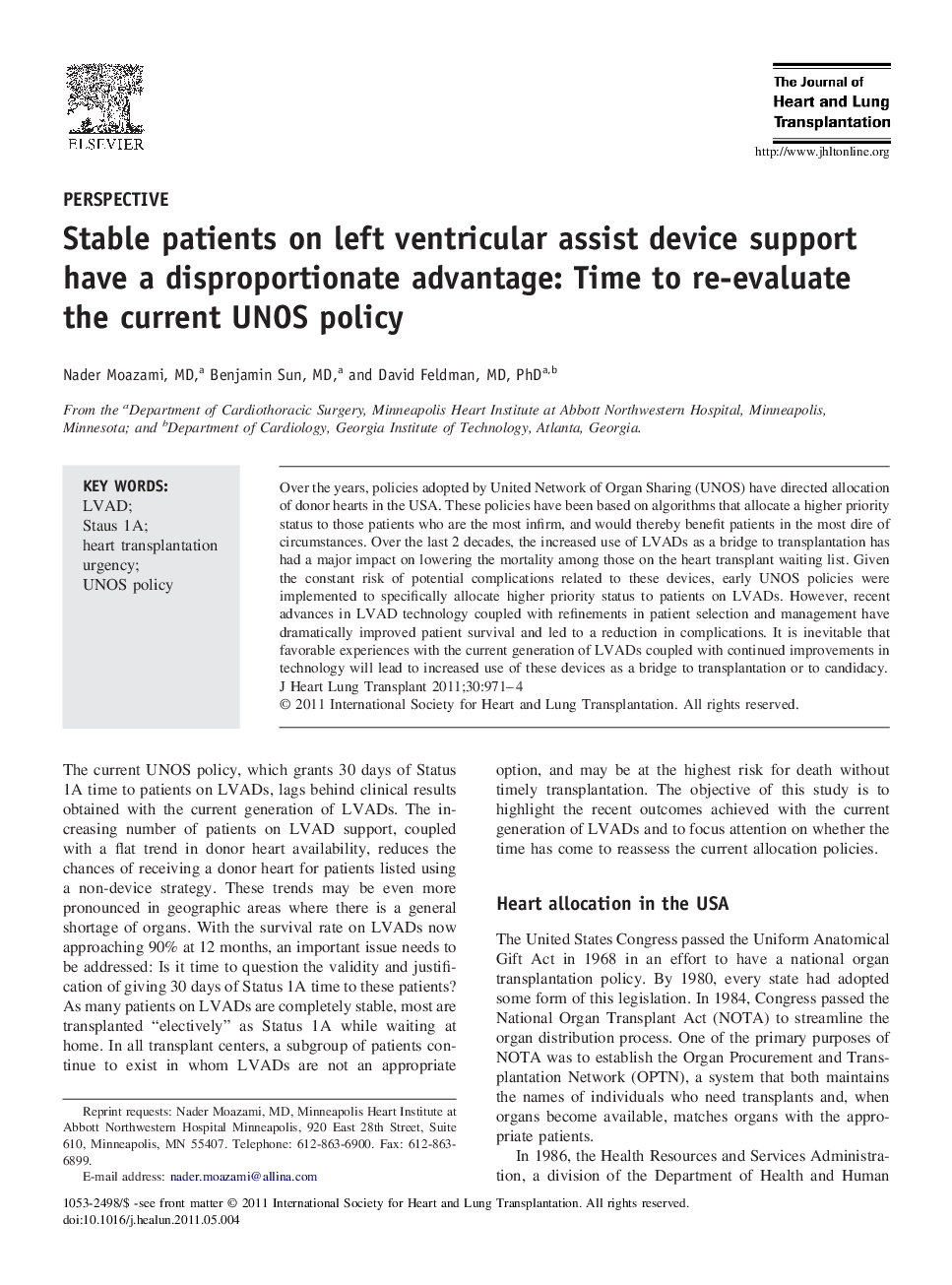| Article ID | Journal | Published Year | Pages | File Type |
|---|---|---|---|---|
| 2971755 | The Journal of Heart and Lung Transplantation | 2011 | 4 Pages |
Abstract
Over the years, policies adopted by United Network of Organ Sharing (UNOS) have directed allocation of donor hearts in the USA. These policies have been based on algorithms that allocate a higher priority status to those patients who are the most infirm, and would thereby benefit patients in the most dire of circumstances. Over the last 2 decades, the increased use of LVADs as a bridge to transplantation has had a major impact on lowering the mortality among those on the heart transplant waiting list. Given the constant risk of potential complications related to these devices, early UNOS policies were implemented to specifically allocate higher priority status to patients on LVADs. However, recent advances in LVAD technology coupled with refinements in patient selection and management have dramatically improved patient survival and led to a reduction in complications. It is inevitable that favorable experiences with the current generation of LVADs coupled with continued improvements in technology will lead to increased use of these devices as a bridge to transplantation or to candidacy.
Keywords
Related Topics
Health Sciences
Medicine and Dentistry
Cardiology and Cardiovascular Medicine
Authors
Nader MD, Benjamin MD, David MD, PhD,
